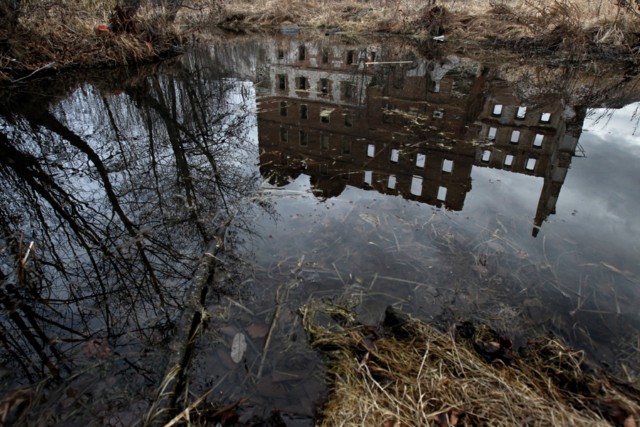A senior official at the Mayak Chemical Combine has taken a small step toward admitting that a radioactive isotope discovered over Europe last month could have come from his facility – something Russian state nuclear corporation Rosatom continues to deny.
A senior official at the Mayak Chemical Combine has taken a small step toward admitting that a radioactive isotope discovered over Europe last month could have come from his facility – something Russian state nuclear corporation Rosatom continues to deny.
French and German nuclear regulators said in early November that they had detected high levels of the non-naturally occurring isotope ruthenium 106 in their atmosphere and that it had likely come from the Ural Mountains where Mayak is located.
Russia’s federal weather service, Rosgdormet, subsequently confirmed – and quickly downplayed – that it had found levels of ruthenium measuring nearly 1,000 times normal in a village neighboring the nuclear facility.
Both Rosatom and the administration of Vladimir Putin have repeatedly denied that the ruthenium came from Mayak, and Rosatom has endorsed a conspiracy theory that the radioactive pollution measured by the Europeans came from a western government’s spy satellite crashing to earth.
For its part, Mayak has repeatedly declared its innocence by saying that it hasn’t extracted ruthenium anywhere at its sprawling Chelyabinsk Region facility “for years.”
 A fence surrounding the closed Mayak Chemical Combine.
Credit: Courtesty of Alisa Nikulina/Ecodefense
A fence surrounding the closed Mayak Chemical Combine.
Credit: Courtesty of Alisa Nikulina/Ecodefense
But Yuri Mokrov, adviser to Mayak’s director general, admitted during a Wednesday webcast press conference that ruthenium 106 routinely emerges during the spent nuclear fuel reprocessing operations that the plant regularly performs, according to a report carried by the Associated Press.
Mokrov went on to insist, however, that the plant was not the source of any major leak, saying it does not produce the isotope on purpose and that the emissions the plant does produce are so insignificant “we can only see it in the chimney.”
That Mayak does not produce the isotope on purpose is something experts would mostly agree with. And they would also agree with Mokrov’s assertion that ruthenium arises during the processing of spent nuclear fuel and waste.
Bellona’s general director and nuclear physicist Nils Bøhmer has suggested that the most likely cause for the ruthenium leak was a filtration error at an oven Mayak uses to bake nuclear waste into glass – a process called vitrification, which is a routine procedure that Mayak regularly performs.
 A group of handpicked journalists and bloggers touring the Mayak site in the wake of the ruthenium leak. (Photo: .po-mayak.ru)
A group of handpicked journalists and bloggers touring the Mayak site in the wake of the ruthenium leak. (Photo: .po-mayak.ru)
During vitrification, ruthenium 106 can become volatile and change form, and these changes determine the kind of filter that’s required. Without the right kind of filter, gaseous ruthenium can end up in the atmosphere – which is exactly where the Europeans found it.
It would appear that Rosatom found it there too: On November 29, three weeks after the ruthenium was detected in Europe, the corporation quietly announced a tender for contractors willing to clean up after a radiation incident at Mayak’s vitrification plant.
At the same time, Rosatom released a statement to the press saying that a panel of experts it had assembled had found no traces of ruthenium at the plant. They also released photos of a group of hand picked journalists dressed in protective gear during a visit to the facility.
Predictably, their reporting endorsed the satellite theory – which has been met with ridicule by Russia nuclear and astrophysicists, who pointed out that most spy satellites operate on plutonium and other radioactive elements, not ruthenium.
Morkov went on to say in his webcast that: “There is Ruthenium in spent nuclear fuel, and Mayak during its activities routinely comes across this isotope,” adding that “actual emissions are hundreds times lower that the permitted levels.”
 The Mayak Chemical Combine.
Credit: po-mayak.ru
The Mayak Chemical Combine.
Credit: po-mayak.ru
That last bit swerved into the nonsense backtracking Rosgidromet, the weather service, quickly issued after it confirmed finding “extremely high” levels of ruthenium in Agrayash, an abused little village that has lived 30 kilometers downwind of Mayak’s radioactive pollution for over half a century – and has the cancer rates to match.
Extreme though the measurements may have been, Rosgidroment quickly rushed back into the fray it had created by saying they weren’t necessarily above the norm. The agency – evidently chastised for stepping off script – added it wouldn’t be ferreting out the culprits for the leak, as whoever it was had done nothing illegal.
Morkrov’s statements in his webcast bring us somewhat closer to the truth. Mayak was denying its involvement in the scandal by saying it doesn’t do one sort of thing with ruthenium, and now it’s admitting that it does do another sort of thing with the ruthenium, and sure, they do occasionally catch the isotope in their chimney– but he adds, of course, that the facility hasn’t had any dangerous leaks of the stuff.
In the coming days, it’s conceivable that Mokrov will find himself chastised like Rosgidromet, but until then the ruthenium business follows the time-honed Soviet handbook of dealing with radiation accidents – blanket denial, followed by a kaleidoscope of conspiracy theories blaming the West, preceding accidental admissions of the truth, all counting down to the big humiliating reveal.
It bears recalling that it took the Soviet government two weeks and four days to admit that the high radiation levels western countries were picking up were coming from an exploded reactor at Chernobyl.
Grading by that curve, admissions on the ruthenium leak are running a little behind schedule. When Rosatom starts running out of satellite theories, its past time they admit to something more down to earth.







